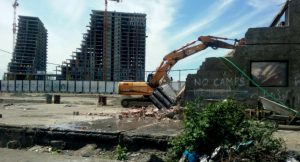Die Situation für Menschen auf der Flucht in Serbien verschärft sich weiterhin. Da sich diese Woche der erste March of Hope jährt, wird wieder vermehrt über die Balkanroute berichtet. Hier daher eine Zusammenstellung von verschiedenen Berichten über Serbien/die Balkanroute im Allgemeinen, bzw. die Situation an den Grenzen und vor den Transitzonen im Speziellen.
Berichte über Serbien/die Balkanroute
Hier über die Situation in Serbien im Hinblick auf den kommenden Herbst/Winter weiterlesen. (Balkan Insight | En)
Hier ein Überblick über die Situation in Belgrad, Kelebija und Horgos. (Are You Syrious | En)
Hier ein kurzer Abriss über die Situation auf der Balkanroute von Griechenland bis Österreich (Zeit Online)
Berichte über die Situation vor den Transitzonen
Hier ein etwas ausführlicherer Bericht über Horgos (Spiegel Online).
Und hier ein weiterer Bericht (Zeit Online).
Berichte über die Grenzpatrouillen und Push-Backs Richtung Bulgarien und Mazedonien.
Seit etwas über einem Monat praktiziert Serbien ebenfalls verschärfte Grenzpatrouillen an den Südgrenzen zu Bulgarien und Mazedonien. Seit dem 22. Juli sind mehr als 5000 Menschen zurückgepusht worden. Im Gegensatz zur Serbisch-Ungarischen Grenze stehen die Südgrenzen nicht im Fokus der internationalen Aufmerksamkeit. Daher gibt es nur wenige Artikel, die die Situation abdecken.
Hier ein Bericht über die Grenzpatrouillen (RTS | Serbisch).
Hier ein Artikel über einen 20 Jährigen Mann aus Afghanistan, der an der Grenze zu Bulgarien erschossen wurde (DW | En).
Hier ein weiterer Artikel über den Todesfall (Balkan Insight | En).

